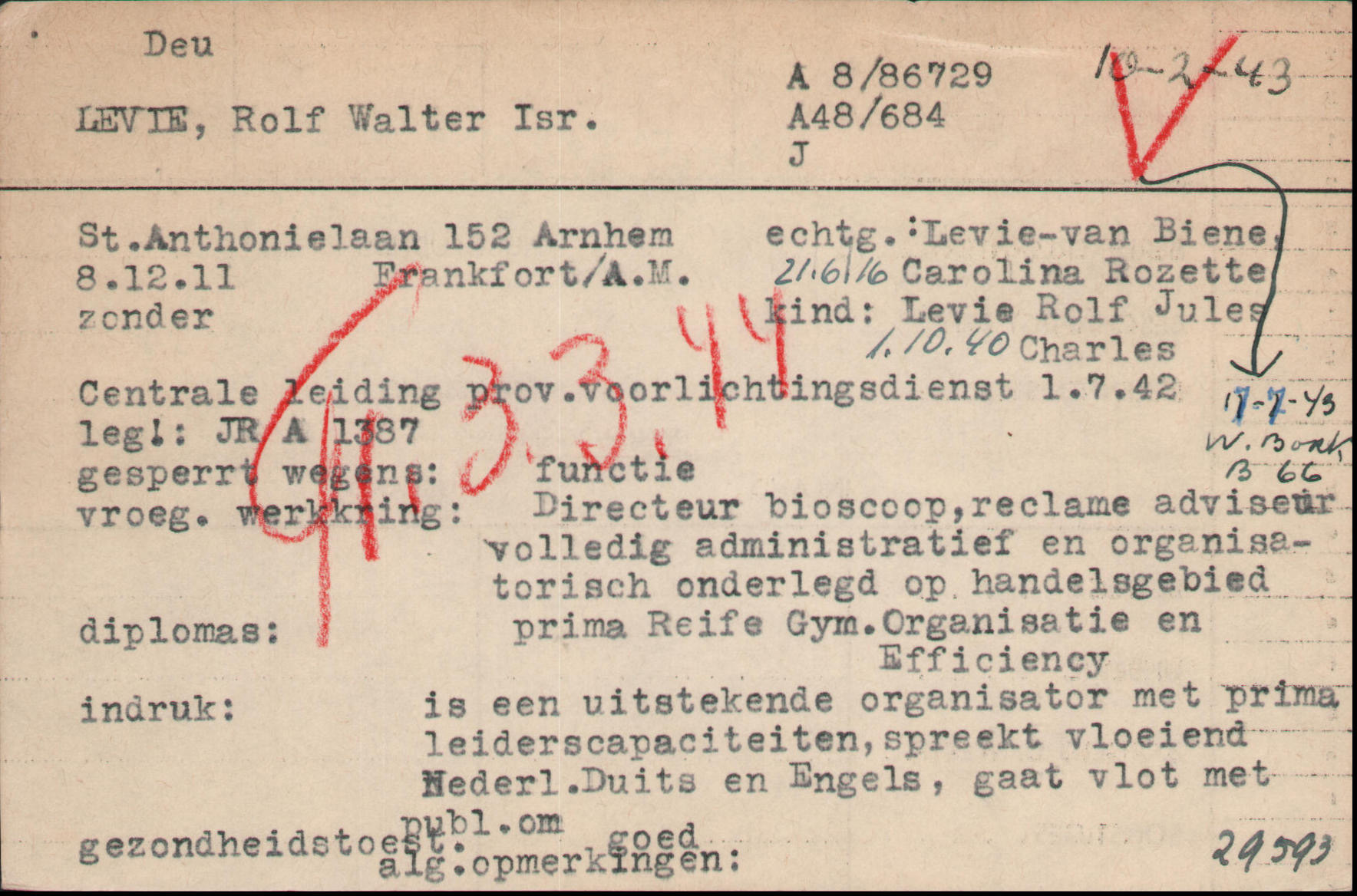
Each Sperre (deportation exemption) was assigned an individual number. The number reveals the reason why the person was exempted from deportation. The numbers were noted on the upper edge of the index card in the card file of the Jewish Council in Amsterdam and in the identification papers.
Jews with a foreign passport were given Sperre (deportation exemption) numbers from 10,000. Protestants baptized before 1941 were assigned numbers from 20,000. Other deportation exemption numbers and categories were: from 30,000 for so-called “Abstammungsjuden” (Jews whose “racial” origin still had to be determined); from 40,000 for “Schutz- und Angebotsjuden” (Jews who were possibly eligible for an “exchange”); from 50,000 for so-called “Metalljuden” who were employed in the metal industry; from 60,000 for so-called “Rüstungsjuden” who worked in companies relevant to the German armed forces, including the diamond industry. The Sperre (deportation exemption) numbers for members of the Jewish Council and their relatives started from 80,000. One of them was Rolf Walter Levie, who was assigned Sperre (deportation exemption) number 86,729. For Jews who were married to non-Jews, the deportation exemption numbers started at 100,000. People who had special privileges in Westerbork because they belonged to the “oude Kampbewohner” (old camp inmates) were assigned numbers starting from 120,000.
In total, fewer than 35,000 Sperren (deportation exemptions) were issued.